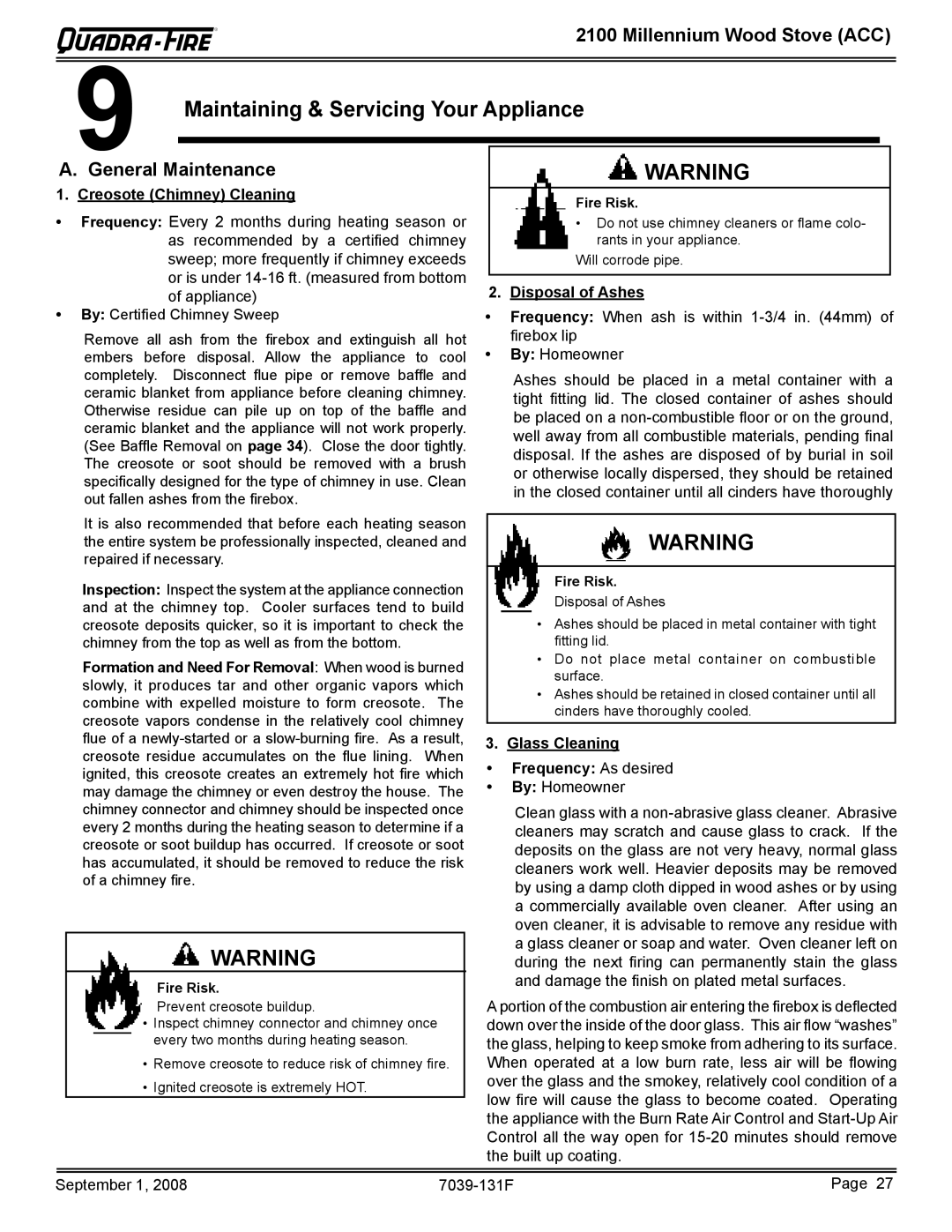21M-ACC specifications
Hearth and Home Technologies' 21M-ACC model represents a significant advancement in the realm of modern home heating solutions. Designed for both aesthetic appeal and functional efficiency, this unit seamlessly integrates contemporary design with advanced technology.The 21M-ACC is primarily known for its high efficiency, boasting an impressive thermal efficiency rating. This means less fuel is used to produce more heat, thereby reducing energy costs and consumption. One of the standout features is the high-efficiency combustion system that enhances the burning process, ensuring that the maximum amount of fuel is utilized before any emissions are released.
Another key characteristic of the 21M-ACC is its innovative AccuFire technology. This advanced control system allows users to finely adjust the flame height, heat output, and other parameters with precision. This level of customization not only enhances comfort but also contributes to energy savings. The model also features an easy-to-use digital control panel, enabling straightforward adjustments and monitoring of performance.
The design of the 21M-ACC is equally noteworthy. It showcases a sleek and stylish appearance that can complement various home décors, ranging from modern to rustic. The large viewing window provides an unobstructed view of the flames, creating a cozy ambiance while ensuring optimal heat distribution throughout the space.
Safety is paramount in the design of the 21M-ACC. It includes features such as a built-in safety shut-off system and a robust heat shield, which ensures that the exterior remains cool to the touch, making it safe for households with children or pets.
Additionally, this model is compatible with a variety of fuel types, including natural gas and propane, offering versatility for users. Whether utilizing it as a primary heat source or a supplementary feature, the 21M-ACC adapts to individual heating needs and preferences.
In conclusion, Hearth and Home Technologies' 21M-ACC combines efficiency, safety, and design sophistication, making it an exemplary choice for those looking to enhance their living space with a reliable heating solution.

